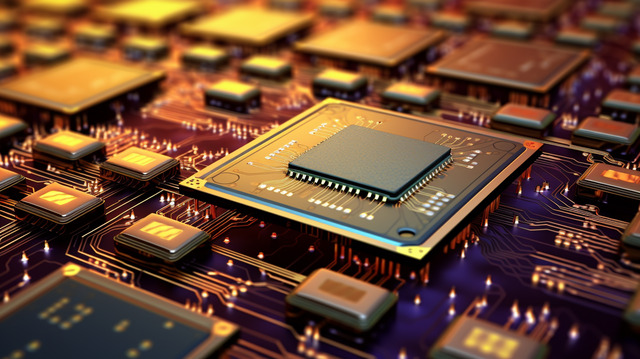Firmware is one of the most essential yet least understood components of modern technology. It operates silently behind the scenes, bridging the gap between hardware and software, enabling devices to function as intended. From smartphones and computers to home appliances, cars, and even satellites, firmware acts as the invisible conductor orchestrating the operations of complex electronic systems. Without it, even the most advanced hardware would remain inert, incapable of performing meaningful tasks. Understanding firmware—what it is, how it works, and why it matters—is fundamental to grasping how the digital world operates today.
The Concept of Firmware
Firmware can be defined as a class of software programmed directly into a device’s non-volatile memory, where it remains even when power is turned off. Unlike traditional software, which can be easily installed, removed, or modified by the user, firmware is embedded into the hardware and serves as its operational foundation. It is designed to provide low-level control for the hardware’s specific functions and to enable communication between hardware components and higher-level software systems such as operating systems or user applications.
The term “firmware” was first introduced in the late 1960s to describe software that resided in hardware, blurring the distinction between the two. The “firm” in firmware reflects its semi-permanent nature—it is not as easily changeable as software but not as fixed as hardware. In essence, firmware represents a middle layer that dictates how hardware behaves and interacts with the rest of the system.
Firmware is stored in memory chips that are non-volatile, such as ROM (Read-Only Memory), EEPROM (Electrically Erasable Programmable Read-Only Memory), or flash memory. This allows it to persist across power cycles and system resets. While early firmware was indeed “read-only” and could not be altered after manufacturing, modern firmware is upgradable, allowing developers and manufacturers to fix bugs, enhance performance, or add new features through firmware updates.
The Role of Firmware in Modern Technology
Every digital or electronic device that performs complex tasks relies on firmware. It initializes hardware during startup, ensures proper component communication, manages power usage, and handles basic operations required before an operating system takes over. Firmware enables processors, memory controllers, input/output devices, sensors, and communication modules to work together seamlessly.
When a device powers on, firmware is the first code to execute. In a computer, for example, the Basic Input/Output System (BIOS) or its modern successor, the Unified Extensible Firmware Interface (UEFI), performs hardware initialization and prepares the system for the operating system to load. In embedded systems such as routers, digital cameras, or IoT devices, firmware not only initializes components but also runs continuously to control all device functions without needing a separate operating system.
In industrial machinery, firmware coordinates sensors, motors, and actuators, ensuring precise control of mechanical systems. In automotive applications, firmware in the Engine Control Unit (ECU) monitors and regulates fuel injection, ignition timing, and emissions. In smartphones, firmware manages touchscreens, cameras, modems, and power systems, enabling user interactions that feel instantaneous and reliable.
Essentially, firmware serves as the control logic of hardware, transforming electronic circuits into intelligent systems capable of performing complex operations.
The Evolution of Firmware
The history of firmware mirrors the evolution of computing itself. In the earliest electronic systems of the 1940s and 1950s, there was no clear distinction between hardware and software—programs were hardwired directly into circuits. Reprogramming required physically altering wiring or replacing components.
As memory technologies advanced, systems began storing machine instructions in read-only memory. The introduction of ROM-based microcode in the 1960s gave birth to the modern concept of firmware. IBM computers, for example, used firmware to define control logic for instruction sets, allowing hardware designs to remain stable while enabling functional updates through code.
Throughout the 1970s and 1980s, firmware became a critical part of personal computers and consumer electronics. The BIOS emerged as a key component that standardized system boot procedures. Embedded systems—devices with dedicated functions like calculators, printers, and industrial controllers—also became widespread, each relying heavily on firmware for operation.
The 1990s and 2000s saw firmware become increasingly updatable, thanks to the development of flash memory. Users could now apply firmware updates to improve performance or fix security flaws. As devices became interconnected, firmware updates began to be distributed over networks, paving the way for today’s over-the-air (OTA) update mechanisms used in smartphones, vehicles, and IoT devices.
In the modern era, firmware has evolved beyond static code. It now includes sophisticated logic, modular architectures, and even lightweight operating systems that manage complex tasks. In some cases, firmware supports virtualization, remote debugging, and AI-assisted decision-making. The evolution of firmware reflects a broader trend toward smarter, more adaptable hardware systems that can evolve through software innovation.
The Architecture of Firmware
Understanding firmware requires an appreciation of how it is structured. Firmware typically resides at the lowest layer of a device’s software stack, directly interfacing with physical components. It can be divided conceptually into multiple layers, each serving distinct purposes.
At the core lies the hardware abstraction layer, which defines how the firmware interacts with the electronic components of the device. It includes drivers and routines that manage input/output operations, timing, memory access, and device-specific protocols. Above this layer lies the control logic or main firmware loop, which orchestrates the device’s behavior according to predefined states or tasks.
In more sophisticated systems, firmware may include a minimal operating environment or a real-time operating system (RTOS). These micro-operating systems allow for multitasking, scheduling, and event management, enabling devices to handle concurrent operations efficiently.
Firmware architecture also depends on whether the system is monolithic or modular. In monolithic firmware, all functionality is embedded into a single binary image. This approach simplifies execution but can make updates and debugging more difficult. In modular firmware, different components—such as communication modules, security layers, and peripheral drivers—are separated, allowing updates and customization without affecting the entire system.
Types of Firmware
Firmware can take different forms depending on its design, purpose, and level of interaction with the user or operating system.
In most consumer electronics, low-level firmware controls basic hardware functions that are rarely visible to users. For instance, the firmware in a keyboard or mouse manages keystroke scanning and signal transmission without user awareness.
Mid-level firmware, often found in embedded systems and IoT devices, operates more autonomously. It may include logic for communication protocols, data storage, or sensor processing.
High-level firmware interacts closely with operating systems and applications. The BIOS or UEFI firmware in computers is a prime example, as it bridges hardware and software during boot. Similarly, the firmware in smartphones interacts with the Android or iOS kernel, managing device-specific hardware such as cameras, Wi-Fi modules, and GPS receivers.
Firmware can also be categorized based on its mutability. Immutable firmware, burned permanently into ROM, ensures reliability and security but cannot be altered after manufacturing. Upgradable firmware, stored in flash memory, can be rewritten when updates are available. Modern devices overwhelmingly use upgradable firmware due to its flexibility and ability to address post-production improvements.
The Importance of Firmware Updates
Firmware updates are crucial for maintaining performance, security, and functionality. Because firmware operates at such a low level, any bugs or vulnerabilities within it can compromise an entire system. Regular updates allow manufacturers to correct defects discovered after release, patch security vulnerabilities, and introduce new features or optimizations.
In consumer electronics, firmware updates often occur automatically or through over-the-air mechanisms. For instance, smartphones receive periodic updates that include firmware improvements for cameras, battery management, and connectivity. Similarly, smart TVs, routers, and wearables regularly update their firmware to enhance user experience or maintain compatibility with new standards.
In industrial and automotive systems, firmware updates have even greater significance. Modern vehicles contain dozens of electronic control units, each running its own firmware. Updates can correct engine inefficiencies, improve braking response, or enhance infotainment systems. Over-the-air vehicle firmware updates have become a hallmark of innovation, allowing manufacturers to improve products long after sale without physical servicing.
However, updating firmware carries inherent risks. If an update is interrupted or corrupted, the device may become “bricked”—unable to boot or function. To mitigate this, many systems include redundant firmware partitions or recovery mechanisms that can restore the device to a safe state if an update fails.
Firmware Security and Vulnerabilities
Firmware security has become one of the most critical concerns in cybersecurity. Because firmware operates at a level below the operating system, it often has unrestricted access to system resources. A compromise in firmware can therefore give attackers control over a device at the deepest possible level.
In computers, malicious firmware modifications can persist even after reinstalling the operating system or formatting the hard drive. Attackers may exploit vulnerabilities in firmware update mechanisms or inject malicious code during manufacturing. Such attacks are difficult to detect because firmware operates invisibly and is rarely scanned by traditional antivirus tools.
To counter these threats, manufacturers have implemented secure boot processes, cryptographic signatures, and hardware-based root of trust mechanisms. Secure boot ensures that only firmware signed by trusted authorities can execute on the device. Hardware root of trust, often implemented through Trusted Platform Modules (TPM) or embedded security controllers, verifies firmware integrity before booting.
Regular security audits and firmware analysis are now standard practices for critical infrastructure, servers, and embedded devices. The rise of IoT has expanded the attack surface exponentially, making firmware security a global priority. Without robust protection, billions of connected devices could be exploited, leading to widespread disruption.
Firmware in Embedded Systems
Embedded systems represent one of the most prominent domains of firmware application. Unlike general-purpose computers, embedded systems are designed for specific tasks, often operating autonomously in real-time environments. Examples include medical equipment, industrial robots, smart appliances, and transportation systems.
In such devices, firmware performs all control and communication functions. It reads data from sensors, processes it, and triggers appropriate responses in actuators or output devices. The reliability of embedded firmware is critical because these systems often operate in mission-critical environments where failure could have serious consequences.
Real-time operating systems (RTOS) are commonly integrated within firmware for embedded systems. They provide deterministic scheduling, ensuring that time-sensitive tasks occur within precise intervals. Firmware in these systems must be optimized for speed, power efficiency, and reliability. It is usually written in low-level languages such as C or assembly to achieve maximum control over hardware.
The growing complexity of embedded systems has led to the emergence of firmware development frameworks and simulation tools that allow testing and debugging before deployment. As embedded devices become more interconnected, their firmware also incorporates communication protocols like Bluetooth, Wi-Fi, or CAN bus, enabling seamless integration into larger networks.
Firmware and the Internet of Things
The Internet of Things (IoT) has expanded the significance of firmware exponentially. IoT devices—from smart thermostats and wearables to industrial sensors—depend heavily on firmware to manage communication, data collection, and remote control. Firmware determines how an IoT device interacts with the cloud, responds to user inputs, and performs edge computations.
Firmware updates are especially important in IoT ecosystems because devices are distributed widely and often operate unattended. Over-the-air updates allow manufacturers to deploy security patches, improve efficiency, or add features without physical intervention. However, this convenience introduces security risks if update channels are not properly secured. Compromised firmware in IoT devices can create vast networks of bots, as seen in large-scale attacks like Mirai, which exploited insecure devices to disrupt internet services.
To address these risks, IoT firmware must incorporate strong encryption, authentication, and integrity verification mechanisms. Lightweight cryptographic protocols are used to secure communications without overloading the device’s limited resources. The future of IoT firmware development lies in balancing functionality, efficiency, and security in highly constrained environments.
Firmware in Computing Systems
In computing, firmware plays a foundational role in enabling hardware to communicate with software. When a computer is powered on, the firmware stored in the motherboard—traditionally the BIOS and now UEFI—performs a Power-On Self-Test (POST) to verify the presence and health of essential components such as memory, processors, and storage devices. It then initializes these components and loads the operating system bootloader from disk or network.
UEFI firmware offers significant advantages over legacy BIOS, including faster boot times, graphical interfaces, and secure boot capabilities. It also supports large storage devices and modular drivers. Firmware exists not only in the motherboard but also within peripheral components such as graphics cards, network adapters, and SSDs. Each of these components runs its own embedded firmware to manage device-specific operations.
Modern computing platforms also rely on firmware for power management, fan control, and hardware virtualization. Advanced firmware modules work closely with the operating system kernel through ACPI (Advanced Configuration and Power Interface), enabling fine-grained control over power states and performance.
Firmware in Consumer Electronics
Everyday consumer devices are powered by intricate layers of firmware. In smartphones, firmware governs the display, radio modules, cameras, sensors, and charging circuits. In televisions, firmware controls image processing, user interfaces, and connectivity options. Even simple household appliances such as washing machines or microwaves depend on firmware to regulate cycles, monitor safety sensors, and interact with users through displays or buttons.
The role of firmware in consumer devices extends beyond control—it defines user experience. Firmware determines how responsive a touchscreen feels, how efficiently a device conserves power, and how seamlessly it integrates with other systems. Firmware optimization can drastically influence performance and battery life. Manufacturers invest heavily in firmware engineering to deliver smooth, reliable interactions that distinguish their products in competitive markets.
Firmware Development and Engineering
Developing firmware requires a unique combination of hardware knowledge and software expertise. Firmware engineers must understand microprocessor architectures, memory hierarchies, and peripheral interfaces while writing efficient and reliable code under tight resource constraints.
The development process typically begins with designing the hardware platform and defining the control requirements. Engineers then write firmware in languages like C, C++, or assembly, ensuring that it interacts correctly with device registers, communication buses, and external peripherals. Testing and debugging are crucial phases, often performed using hardware simulators or in-circuit emulators.
Modern firmware development also incorporates version control, automated testing, and continuous integration workflows similar to traditional software engineering. As devices become more complex, collaboration between hardware designers, firmware developers, and application engineers becomes essential to achieve seamless integration and performance optimization.
Firmware and Artificial Intelligence
Artificial intelligence has begun to influence firmware design, particularly in optimizing performance and enabling adaptive behavior. Machine learning algorithms can be embedded directly into firmware to make real-time decisions based on sensor data or usage patterns. For example, AI-enhanced firmware in smartphones can optimize power consumption, camera exposure, or signal strength dynamically.
In industrial automation, firmware integrated with AI enables predictive maintenance by analyzing sensor readings to detect anomalies before failures occur. Autonomous vehicles rely heavily on AI-enabled firmware to process vast amounts of sensory information and make split-second control decisions.
Firmware embedded with machine learning capabilities marks a significant shift from static control logic to dynamic, data-driven systems. It allows devices to evolve through experience, improving efficiency and resilience without requiring complete reprogramming.
The Future of Firmware
As technology advances, firmware continues to grow in sophistication and importance. Devices are becoming smarter, more interconnected, and more autonomous, requiring firmware that can manage complexity while remaining secure and efficient.
The rise of edge computing will make firmware even more central to real-time decision-making. Devices at the network edge will process and analyze data locally, requiring firmware capable of performing advanced computations securely and reliably. Quantum computing and neuromorphic processors may eventually demand entirely new forms of firmware to manage unconventional architectures.
Another major trend shaping the future of firmware is standardization and open-source collaboration. Projects like coreboot, OpenBMC, and Zephyr RTOS exemplify community-driven approaches to building secure, transparent, and customizable firmware for diverse applications. Open-source firmware reduces dependency on proprietary systems and allows greater control over device security and functionality.
As sustainability becomes a global priority, firmware will also play a role in energy efficiency. Smarter firmware can optimize resource usage, extend device lifespan, and support recycling through adaptive performance management.
Conclusion
Firmware is the hidden intelligence that powers the modern world. It breathes life into hardware, allowing complex electronic systems to sense, compute, communicate, and act. Though it operates invisibly, its impact is profound, shaping the reliability, security, and performance of every device we use.
From the moment a computer powers on to the operation of an autonomous vehicle or the function of a medical device, firmware orchestrates countless interactions that make technology seamless and responsive. Its evolution from static ROM code to dynamic, updatable systems mirrors humanity’s progress toward smarter and more adaptive machines.
Understanding firmware reveals the elegance of modern engineering—a delicate balance between hardware precision and software flexibility. As technology continues to advance, firmware will remain at the core of innovation, quietly ensuring that the digital and physical worlds stay in perfect harmony.






